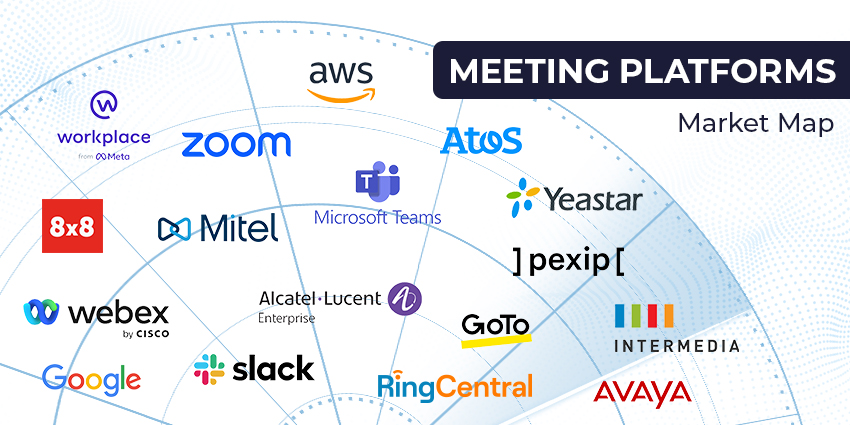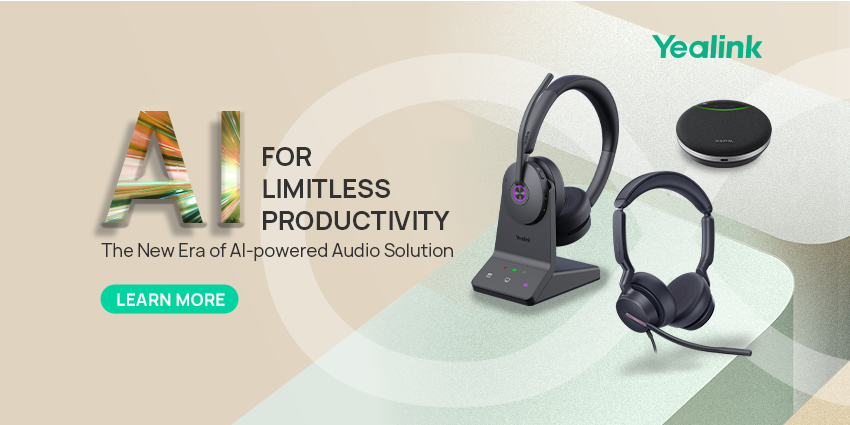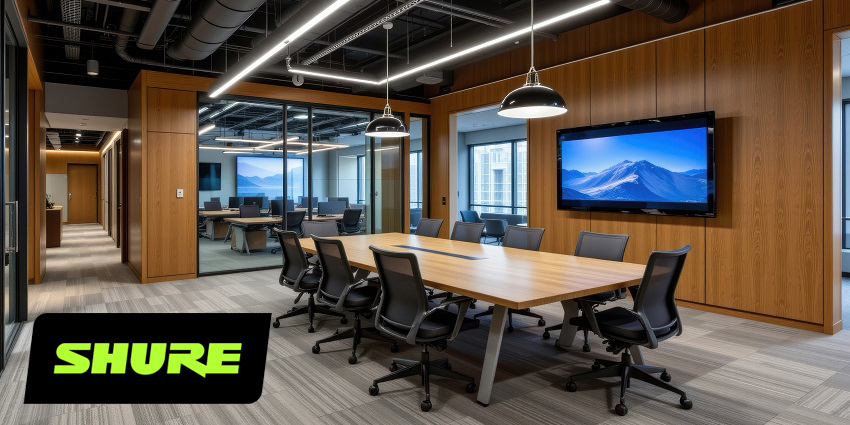As demand for UCaaS tools, collaborative meeting systems, and cloud-based services continue to grow, the way we approach communication is changing. Today, the majority of businesses run at least some of their communication stack on the cloud. We’re all leveraging flexible solutions like zero-touch provisioning and virtual meeting rooms to connect teams.
Although cloud-based software is playing a significant role in the way we interact today, it’s important to remember the value of hardware in the conversation too. Without the most efficient, easy-to-use, and reliable endpoints, our daily conversations would be a lot different.
So, how to you build the perfect workspace for collaborative teams? Is the future of hybrid work in agnostic products that work with any software? Or is it better to choose your preferred meeting room and collaboration solution, so you can pick dedicated tools for the job?
The Rise of Solution-Specific Endpoints
Solution-specific endpoints are growing increasingly popular following 2020.
Microsoft Teams has supported certified devices for Teams users for a number of years now, including Teams-dedicated headsets and desk phones with their own instant join buttons.
Companies like Cisco have their own selection of meeting room and communication hardware products to choose from too, offering easy integration with the Webex environment for meetings.
Microsoft even recently announced a new series of “modern” accessories, specially designed for the era of remote and hybrid work. Each product in the accessories line is dedicated for use with Microsoft Teams, and custom-created to deliver better experiences for remote employees.
However, while solution-specific endpoints aren’t new, the scope of these offerings has definitely begun to change following the pandemic. Companies are now equipping employees for a future of hybrid work, where the technology you use, and the design of your meeting room could be another way for customers and clients to assess the quality of your brand.
The devices of the hybrid meeting environment, regardless of whether you’re building an office meeting room for socially distanced collaboration, or a home office, are status symbols, as well as productivity tools. In an environment where companies can’t afford to lose any more customer trust, investing in a complete, dedicated solution may seem like the safest option.
When do Solution-Specific Endpoints Make Sense?
Perhaps the question isn’t whether solution-specific endpoints will be the devices of the future, but when they’ll be most appealing.
In high-value meetings when business leaders are connecting to shareholders and stakeholders, having a dedicated meeting room hardware kit could reduce the risk of issues. Employees will feel comfortable with the tools they’re using, and the aligned hardware and software should lead to more seamless meeting experiences.
In the remote office, smaller dedicated tools, like a Microsoft Teams enabled headset, could give employees an extra productivity boost, by allowing them to leverage features like instant meeting join, or mute buttons when they’re in a conversation.
Solution-specific endpoints are intended to not just enable access to the tools that employees use every day but make accessing those solutions more intuitive and impressive. Something as small as an AI algorithm in your Teams microphone that can inform you when you’re talking while still on mute can make a huge difference to the flow of an important conversation.
On the other hand, in a shared meeting room environment, build for the future of hybrid and remote work, it may be better for companies to invest in more agnostic technology. If you’re not sure which tools your clients are going to be using to connect with you, and you want to feel comfortable reaching them on any platform, an agnostic kit can help with this.
Platform-agnostic hardware also opens the door to Bring Your Own Meeting experiences and general flexibility, without employees having to worry about the presence of a “Join Meeting” button that doesn’t work with their service.
Solution Specific Tools are Evolving
As the meeting room continues to change, the solution-specific tools associated with them are evolving too. In the past, it was common to have dedicated desk phones, headsets, or speakerphones. Now, there’s a future for all-in-one room kits, and dedicated monitors too.
In 2021, Dell launched a new series of monitors specifically for Microsoft Teams. These products are built specifically for virtual communication, with pop-up IR cameras, equipped with Windows Hello, and a button for Teams access.
The introduction of the new Teams’ monitors highlights a growing demand for companies to develop professional space for hybrid and remote workers that mimic the functionality of the in-office environment. Remote employees working on Teams can leverage a full computer environment specially suited to their preferred Teams environment.
Elsewhere, companies like Neat are building custom video conferencing bars specifically for Zoom conferencing. These bars offer the perfect plug-and-play functionality for users who need to launch enhanced meeting experiences as quickly and intuitively as possible.
For companies unlocking all-in-one meeting environments like Zoom Rooms, having a dedicated piece of hardware like this only makes sense. It helps to know that many of these dedicated tools won’t stop you from using other software either. You can still potentially meet in Teams with a Zoom bar; you just won’t get the complete experience.
Should Your Investment Be Specific?
We’re going through a complex period of growth in the communication landscape right now. Companies are only just beginning to dip their toes into the waters of hybrid work. We’re all looking forward to a new future, and it’s difficult to know for certain which strategies will work best.
For many businesses, a dedicated solution-specific set of hardware tools will allow them to more immediately leverage the full benefits of their UCaaS software. As tools like Microsoft Teams become the heart of the business environment, being able to take full advantage of your UCaaS provides a huge competitive edge.
However, not everyone will want to take the solution specific route. For some, the most appealing products will still be the ones that deliver the same functionality, no matter which service you use.







